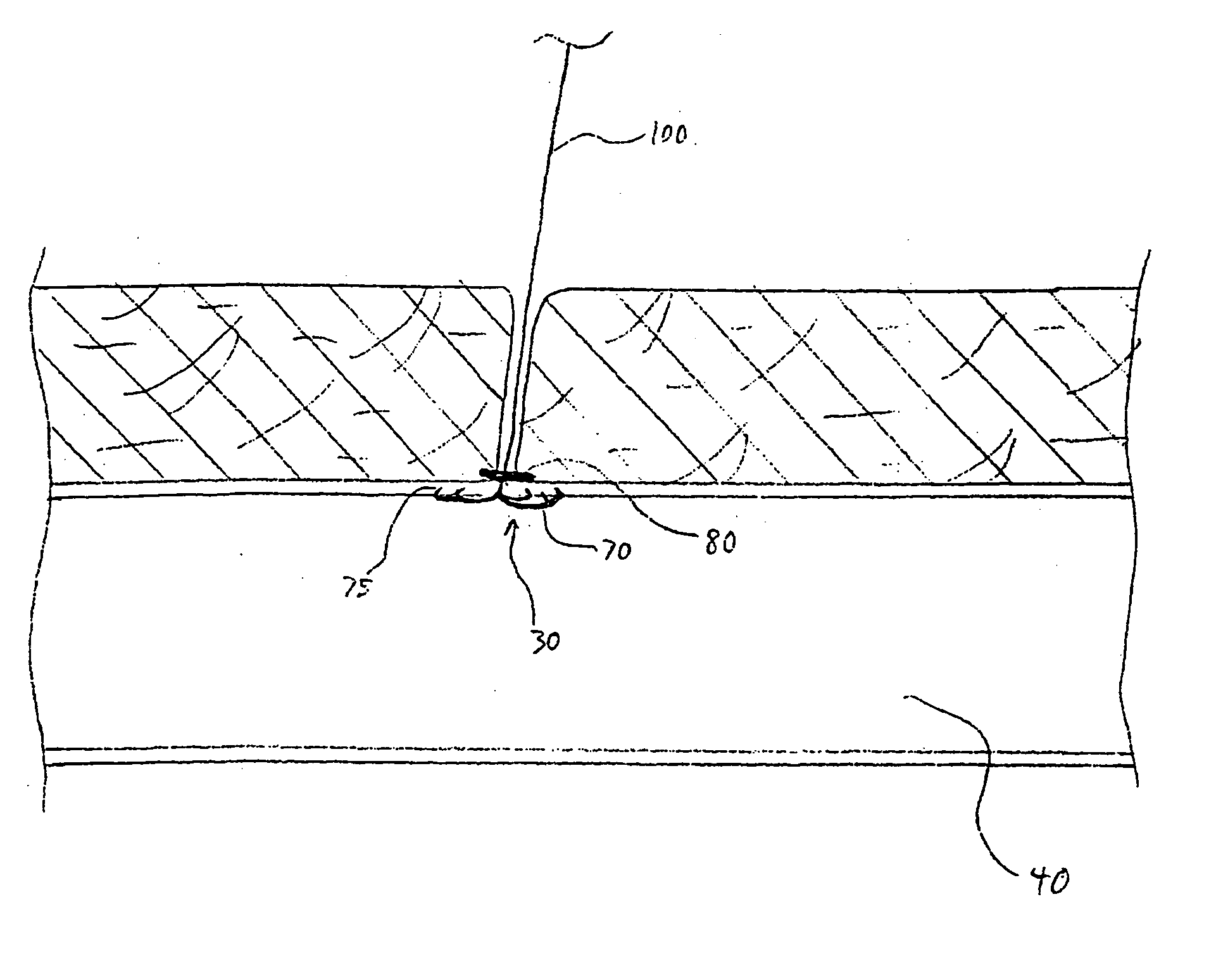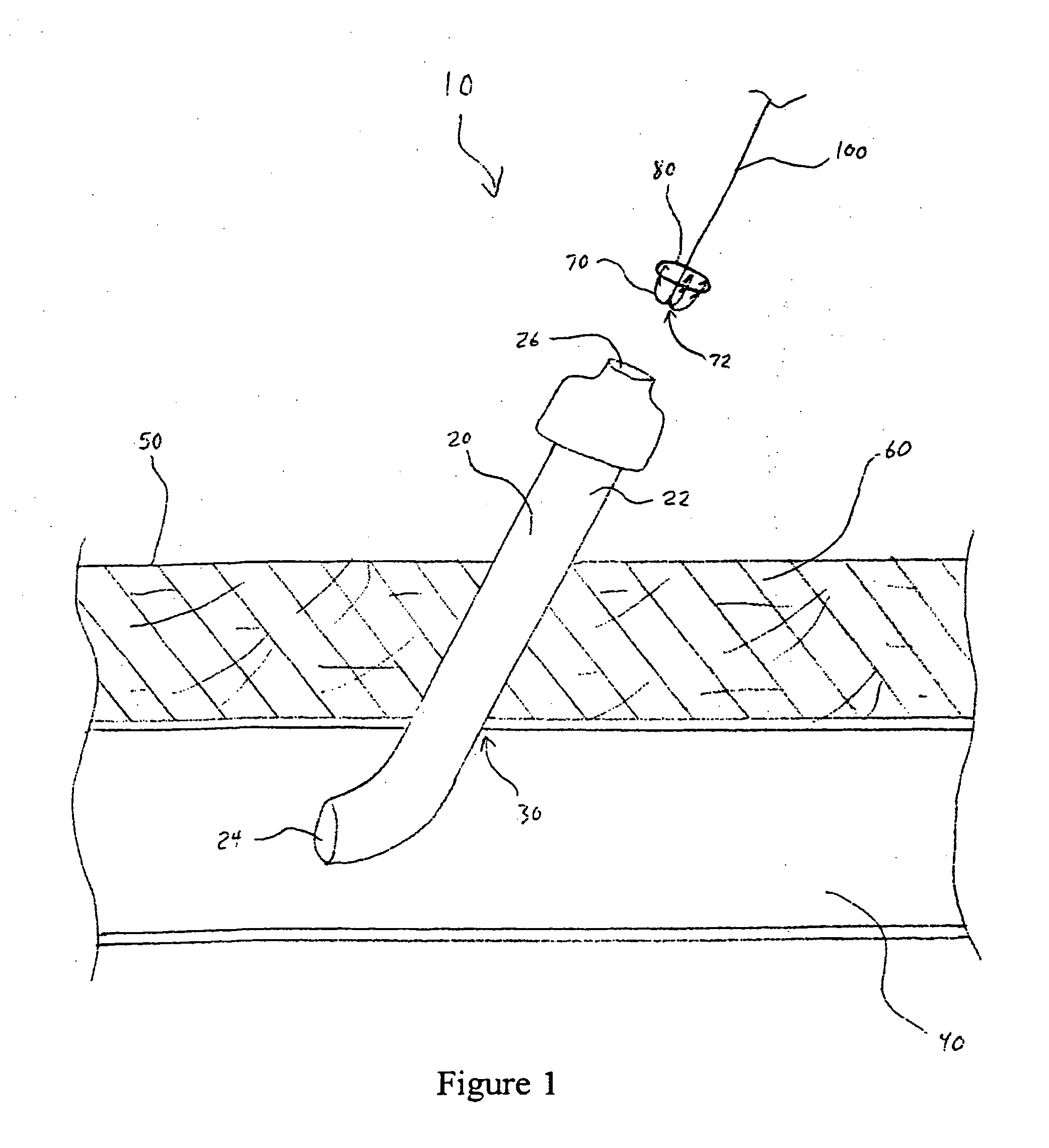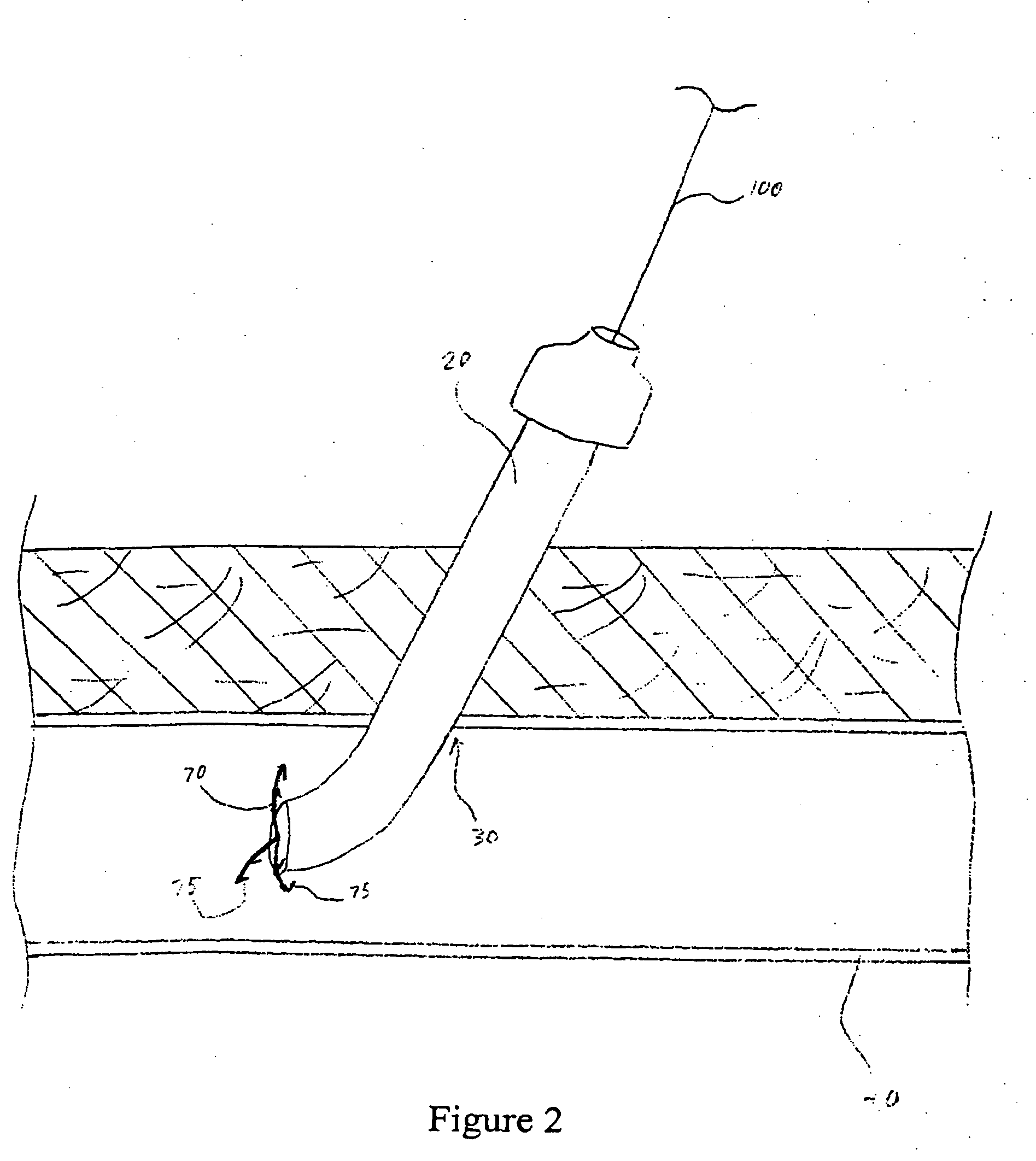Vascular closure device
a technology of vascular closure and perforation, which is applied in the field of vascular closure devices, can solve the problems of ineffective utilization of practitioners, impaired patient comfort, and increased risk of hematoma, and achieve the effects of effective sealing of blood vessels, convenient use, and effective sealing of perforations
- Summary
- Abstract
- Description
- Claims
- Application Information
AI Technical Summary
Benefits of technology
Problems solved by technology
Method used
Image
Examples
Embodiment Construction
[0035] The present invention provides a reliable and easily-used vascular closure device for closing and effectively sealing an opening in a luminal wall, such as made during the course of a percutaneous surgical procedure, using three complementary sealing methods. The device comprises at least two resilient tines and a collar. The practitioner contracts the resilient tines from an open state to a closed state to grasp the interior edges of the opening together and folds and apposes the edges tightly together. The collar is then used to hold the tines in a closed position. In addition, the collar acts to plug the opening thereby acting as another means of sealing the opening. Because the present invention uses three mechanisms to effectively seal a perforation, it provides a better seal, enables faster healing, and better promotes and achieves percutaneous vascular hemostasis allowing earlier ambulation and patient discharge in the most effective manner. In addition, the use of the...
PUM
 Login to View More
Login to View More Abstract
Description
Claims
Application Information
 Login to View More
Login to View More - R&D
- Intellectual Property
- Life Sciences
- Materials
- Tech Scout
- Unparalleled Data Quality
- Higher Quality Content
- 60% Fewer Hallucinations
Browse by: Latest US Patents, China's latest patents, Technical Efficacy Thesaurus, Application Domain, Technology Topic, Popular Technical Reports.
© 2025 PatSnap. All rights reserved.Legal|Privacy policy|Modern Slavery Act Transparency Statement|Sitemap|About US| Contact US: help@patsnap.com



